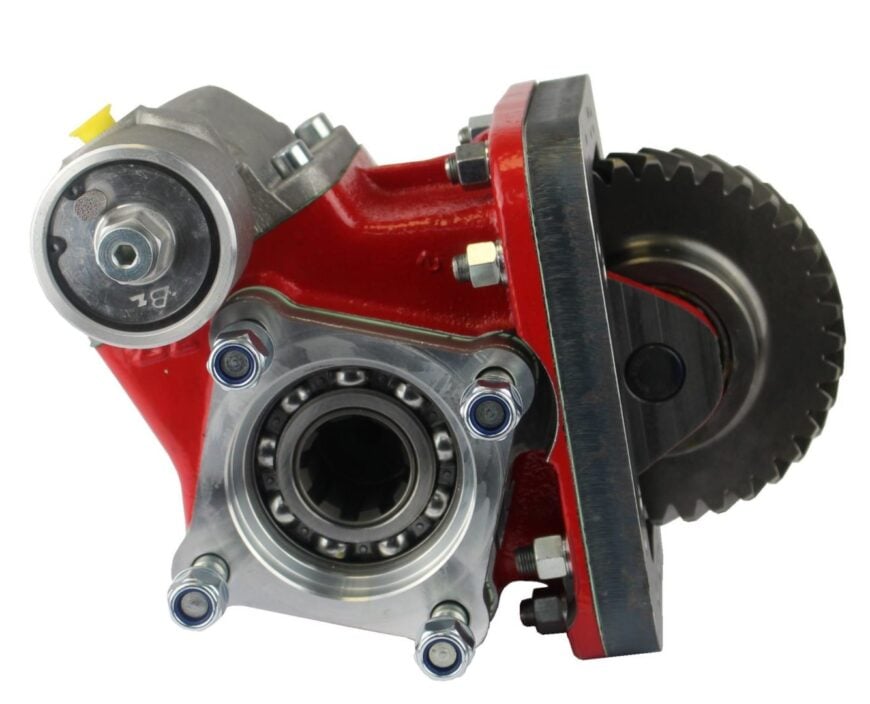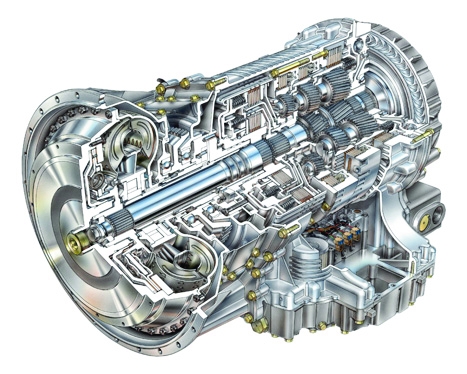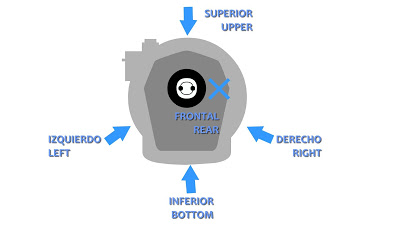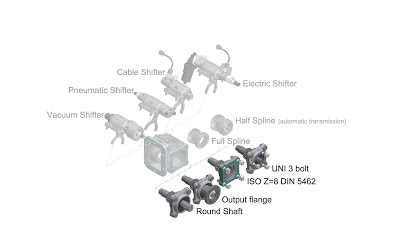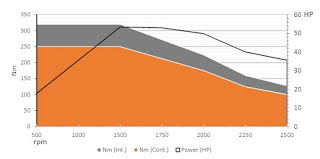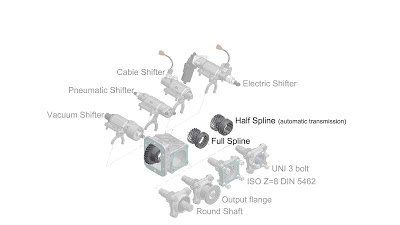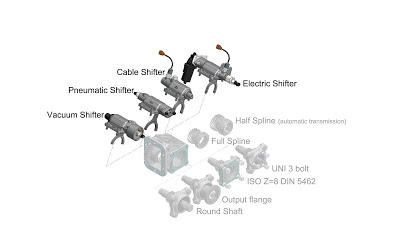7 points to consider when choosing a power take-off
The power take-off or PTO (for its acronym) is a pneumatic system that is mounted on the gearbox to obtain a power and a certain number of turns for the application we need.
This mechanical energy from the gearbox is transmitted to the pump, turning into hydraulic energy.
There are seven points to consider when choosing a PTO:
Gearbox make and model:
When ordering a PTO, it is important to know the make and model of the gearbox. In this way, we can advise you to find the PTO that best suits your needs.
Window or register of the gearbox to be used:
Most commercial vehicles have one or more registers in the gearbox in order to install a power take-off. Each window offers a different transmission ratio, and depending on its position we have:
- Sides: the window for fixing the PTO is located on one of the sides of the gearbox (left or right), always looking at the gearbox from the rear of the vehicle.
- Rear: the opening is located on the rear part of the gearbox. They correspond mostly to ZF, MB and Volvo boxes.
- Inferior or bottom: the opening is in the lower part or „belly“ of the box.
What is going to be moved?
The outputs of the power take-offs depend on the type of application that will be given to it. The most commons are:
- Compact outlet for pumps (ISO 4 holes, UNI 3 holes, SAE A, SAE B, SAE C)
- Plate output to connect to a transmission (SAE 1100, SAE 1300, SAE 1400, SIN 90, DIN 100, DIN 120, among others)
Power needed
To calculate the power consumed, it is necessary to know the pressure and flow of our application.
Required rotation direction
Depending on the number of gears that the PTO has, we can choose the direction of rotation. Bezares has inverter adaptors for cases in which there are no different options.
What is the final speed required at the output of the PTO?
Depending on the internal relationship, the PTOs can be:
- Simple: Also known as direct PTOs. 1:1 ratio
- Multipliers: They multiply the turns they receive at the exit of the box. 1:>1 ratio
- Reducers: They reduce the turns at the exit of the gearbox. Ratio 1:<1 ratio
To calculate the final ratio, simply multiply the ratio at the box outlet by the internal ratio of the power take-off.
What kind of actuator will be necessary ?
Depending on the type of drive, power take-offs can be classified as follows:
- Pneumatic: If the truck has a pressurized air brake, it means it has a compressor. Usually between 7 kg / cm2 and 8 kg / cm2 are actuated. In small vehicles, where no compressor is available, it is possible to install one using the BZ pneumatic pressure kit. It is an autonomous unit without maintenance, which provides a pneumatic line.
- Mechanical: They are operated manually by means of a lever or cable that connects directly to the piston of the power take-off. With the movement of the lever from the cabin, the fork of the power take-off moves internally, enlarging it with the change.
- Vacuum: When the truck has a depressor, they work in the opposite way than pneumatics, through a vacuum line. If your vehicle does not have one, it is also possible to install it using the BZ single effect kit.
- Electric with motor: This actuator includes a small electric motor that is responsible for rotating the actuating rod, internally displacing the synchronized until the power take-off is activated. PTOs equipped with this actuator have a system for easy synchronization ensuring that the actuation occurs. With this electrical system, unlike the solenoid type, only the electric motor works at the moment of connection and disconnection, allowing long working times of the PTO without electrical consumption and without affecting the vehicle battery.
- Electrohydraulic: They have an electrohydraulic actuator incorporated. They are usually used in power take-offs with a built-in clutch for Allison or Aisin automatic gearboxes.

